

 First of all, if you have not yet “liked” BKWine Magazine on Facebook, please do it now. Much appreciated!
First of all, if you have not yet “liked” BKWine Magazine on Facebook, please do it now. Much appreciated!
Wine Country China …?
Britt is in China this week. One of ten invited international wine experts to judge a wine competition with Chinese wines in the Ningxia region. Britt was there already in 2005, on a similar mission. Much has happened since.
In 2005, the Chinese wines were not something that impressed, so it will be interesting to see how they are today. The competition includes, I think, mainly wines made in China by winemakers from other countries, invited to make wine in China.
China will undoubtedly have a major impact on the world wine market in the future. But how is hard to know.
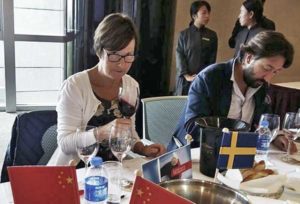 Wine is a fairly new phenomenon in China. It is not a traditional drink with a meal. What, when and how to drink will therefore depend on things other than traditions.
Wine is a fairly new phenomenon in China. It is not a traditional drink with a meal. What, when and how to drink will therefore depend on things other than traditions.
Already today China is an important player in the wine world. China has the world’s second largest area planted with vines. Only Spain has more vines than China. France is third, and then Italy. This does not mean that China is the second largest producer of wine in the world (as many wrote when China overtook France in vineyard area a few years ago). A majority of the grapes are used for other purposes, edible grapes, grape juice, raisins…
But China does makes a lot of wine. In 2016 it was the world’s 6th largest wine producer. However, Italy, who was the biggest in 2016, makes more than four times as much wine as China. China has about the same wine production as Australia, South Africa, Chile and Argentina. Around 10 million hectolitres each.
China is also a major importer of wine. Sometimes it is said that China only buys exclusive expensive wines. That’s wrong. It was truer a few years ago, before anti-corruption and bribery became a major point on the political agenda. This dramatically changed the picture. But sure, China buys a lot of luxury wines as well. There are many rich Chinese people. There are simply many Chinese people.
Today, China is the largest export market for Bordeaux wines, by a good margin. That does not happen by just buying luxury wines. But it’s true that strong brands are important; That’s probably why Bordeaux is doing well in China, the world’s strongest brands for wine.
There is also a lot of talk about Chinese buying up vineyards. Yes, it’s happening but it’s not on a big scale. Yet, at least. Also in this case it is about well-known names, or at least well-known districts. It is primarily in Bordeaux this happens. A little more than 100 Bordeaux chateaux are owned by Chinese today. Of a total of around 7000 properties, so it’s not an invasion.
What is pretty certain is that China will more and more have an impact on the wine market in the world. But how? Well… What do you think?
But it will probably take some time before we, BKWine, start organising wine tours to China. (Although we have already made wine tours for Chinese. And if anyone is interested, we can tailor design a tour to China…) For the moment you will be content with our more “regular” destinations.
There are a few places left for our winter tours (February-March): to South Africa and maybe even to Chile-Argentina. Book now if you want to come!
The spring travel program is almost finished; you will find the dates below. Detailed programs are coming soon.
Britt & Per
PS: Recommend to your friends to read the Brief !
– – – – – –
What’s on at BKWine Tours
Autumn / fall 2017 (with places left)
- Bordeaux, September 27 – October 1
Winter 2018
- Chile and Argentina, January 27 – February 11, 2018
- South Africa, February 23 – March 5, 2018 (with possible safari and golf add-on)
Spring 2018
- Bordeaux, 25-29 April
Autumn 2018
- Bordeaux, September 26-30
- South Africa, November
For more information please contact us on email or on phone (we’re on French time), or go to our wine travel site on www.bkwinetours.com!We also make custom designed wine tours – on-demand tours for you and a group of friends, for your company (maybe to scout new winegrowers?), for a special event… We can combine winery visits and wine touring with other activities: gastronomic workshops, visit to an oyster farm, truffles hunting, cheese making, and more. More info on the custom designed and bespoke BKWine wine tours and travel here!
Read our book(s)
We have written several wine books, nine at the last count. One of them has been translated to English; the others are (so far) only available in Swedish. This is the one that is available in English: Biodynamic, Organic and Natural Winemaking, Sustainable Viticulture and Viniculture
All our books are on wine, but on different subjects: wines of the Languedoc, wine growing and wine making, the wines of France, Tuscany, Bordeaux, Piedmont, Burgundy, Champagne. Several have won prestigeous prizes and awards. Read more on our wine books.
From the World of Wine
In Brief
In short, news and stuff from the world of wine.
Dates for some of next year’s wine tours
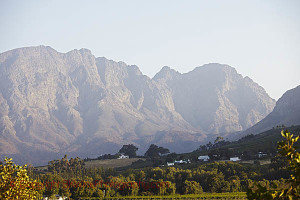 If you are already planning a wine tour for next year (this year is sold out), we can first of all offer you Chile-Argentina and South Africa in the winter. But we also have some of the dates ready for the rest of the year. Here they are:
If you are already planning a wine tour for next year (this year is sold out), we can first of all offer you Chile-Argentina and South Africa in the winter. But we also have some of the dates ready for the rest of the year. Here they are:
- Chile & Argentina, January 27 – February 11
- South Africa, February 23 – March 5
- Bordeaux, April 25-29
- Bordeaux, September 26-30
You can soon find the detailed program for the Bordeaux tours on bkwinetours.com. (The winter tours are already there of course.)
Record-breaking small wine harvest in France
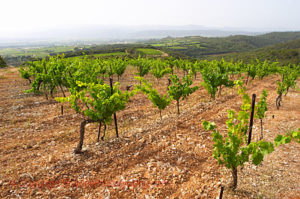 Already today it is quite clear how big the wine harvest will be this year, with quite a lot of certainty. It will be small. The harvest is also very early. In some places it has already begun, the earliest picker started on August 10, but in most wine regions it will be a bit into September. The harvest is expected to reach 37 million hectolitres, the smallest harvest since 1945. A decline with 19% compared to the 2016 harvest. The harvest is so small due to the weather. In the spring we had a lot of very bad weather, including frost in many places, which killed the young buds. Then summer has been extremely dry. Last year’s harvest reached 45.5 million hectolitres, which was a more normal harvest. Read more: vitisphere.com
Already today it is quite clear how big the wine harvest will be this year, with quite a lot of certainty. It will be small. The harvest is also very early. In some places it has already begun, the earliest picker started on August 10, but in most wine regions it will be a bit into September. The harvest is expected to reach 37 million hectolitres, the smallest harvest since 1945. A decline with 19% compared to the 2016 harvest. The harvest is so small due to the weather. In the spring we had a lot of very bad weather, including frost in many places, which killed the young buds. Then summer has been extremely dry. Last year’s harvest reached 45.5 million hectolitres, which was a more normal harvest. Read more: vitisphere.com
Italy’s wine harvest prediction: extremely small volume
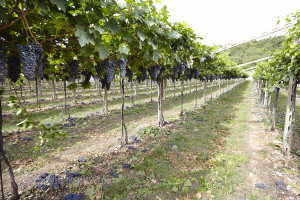 It is perhaps excessive to call it disaster, but also the Italian harvest (like the French harvest) is expected to be extremely small this year. The Italian oenologist association predicts that Italy will harvest 41 million hectolitres. This is a decline with 24% (!) compared to 2016 (54 M hl). Last year, however, gave a fairly large volume. Compared with the average over 5 years, there is still a significant decline: -13%. Worst hit is Lazio-Umbria with 40% less, but also Tuscany, Abruzzo, Apulia and Sicily lose about a third. In Italy, it is especially the very hot and dry summer that has had an effect, although they also had some problems with spring frost and hail. Will the decline in Italy and France, the world’s two largest wine producers, lead to higher prices? Hard to know, but my guess is that the effect will be very small. On the other hand, it may be an opening for “alternative” wine countries to deliver more on the export market. What do you think? Read more: divini.corriere.it
It is perhaps excessive to call it disaster, but also the Italian harvest (like the French harvest) is expected to be extremely small this year. The Italian oenologist association predicts that Italy will harvest 41 million hectolitres. This is a decline with 24% (!) compared to 2016 (54 M hl). Last year, however, gave a fairly large volume. Compared with the average over 5 years, there is still a significant decline: -13%. Worst hit is Lazio-Umbria with 40% less, but also Tuscany, Abruzzo, Apulia and Sicily lose about a third. In Italy, it is especially the very hot and dry summer that has had an effect, although they also had some problems with spring frost and hail. Will the decline in Italy and France, the world’s two largest wine producers, lead to higher prices? Hard to know, but my guess is that the effect will be very small. On the other hand, it may be an opening for “alternative” wine countries to deliver more on the export market. What do you think? Read more: divini.corriere.it
English wine exports increase sharply, up 21%
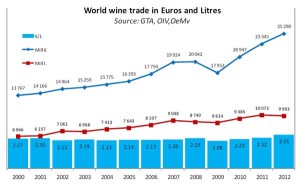 English wine has become really trendy, especially sparkling. Now, the wines from the Brexit island are also moving forward in the export market. And maybe it’s exactly Brexit that’s the reason behind it. The pound has fallen (soon at parity with the euro) and English wine has become cheaper in other countries. Exports increased by 21% in value in the first half of 2017 and reached £ 273.8 million, according to figures from the Food and Drink Federation. Most of the UK exports of food and drink go to the EU, so it may not bode well for the long run, in view of Brexit. Read more: fdf.org.uk
English wine has become really trendy, especially sparkling. Now, the wines from the Brexit island are also moving forward in the export market. And maybe it’s exactly Brexit that’s the reason behind it. The pound has fallen (soon at parity with the euro) and English wine has become cheaper in other countries. Exports increased by 21% in value in the first half of 2017 and reached £ 273.8 million, according to figures from the Food and Drink Federation. Most of the UK exports of food and drink go to the EU, so it may not bode well for the long run, in view of Brexit. Read more: fdf.org.uk
Alcohol consumption has fallen by 10 litres in 10 years (in France)
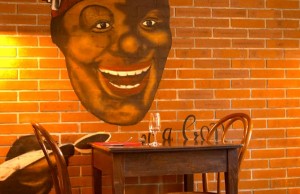 Over a ten year period households’ alcohol consumption has fallen by 10 litres to today 70.7 litres per household, a decline of 12%, a study made by Kantar Worldpanel shows (12,000 households). In France. People also spend less: the household budget has fallen over one year by 1.70 euros 327.70 euros in 2016. (How does your budget compare…?) A positive trend is that more people order wine (or something else with alcohol) when they go to the restaurant: 45.4% of restaurant visitors. Some more positive numbers: about a third, 37%, of the French consume some kind of alcohol at least once a week, also a slight increase, but there is a decline in how many people do it daily: only 9%. What’s also reduced is the percentage of people who does not touch a drop: only 18%, down from 22% in 2015. Read more on vitisphere.com or contact Kantar.
Over a ten year period households’ alcohol consumption has fallen by 10 litres to today 70.7 litres per household, a decline of 12%, a study made by Kantar Worldpanel shows (12,000 households). In France. People also spend less: the household budget has fallen over one year by 1.70 euros 327.70 euros in 2016. (How does your budget compare…?) A positive trend is that more people order wine (or something else with alcohol) when they go to the restaurant: 45.4% of restaurant visitors. Some more positive numbers: about a third, 37%, of the French consume some kind of alcohol at least once a week, also a slight increase, but there is a decline in how many people do it daily: only 9%. What’s also reduced is the percentage of people who does not touch a drop: only 18%, down from 22% in 2015. Read more on vitisphere.com or contact Kantar.
Rioja allows villages and sub-regions on the label
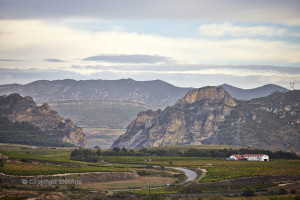 Traditionally, Rioja is simply Rioja. No vineyards or villages or the like on the label. But in the same way that Rioja wines are exciting and modern today, the rules also evolve. A little while ago, it was allowed to put a vineyard name on the Rioja label. Close on the heels of that decision, they have now approved putting villages and sub-regions on the label. However, a producer may only use the village name where the winery itself is built. Thus, a producer cannot make different wines with different village names, even though he may have vineyards in different parts of Rioja. In the usual way, 15% of the grapes may have a different origin, but only from neighbouring villages. It is also planned to rename Rioja Baja to Rioja Oriental. An interesting development with village indications, albeit with some strange rules. It follows the tendency of more and more smaller producers to emerge, in addition to the large traditional “negociant” houses with well-known brands. Read more: spanishwinelover.com
Traditionally, Rioja is simply Rioja. No vineyards or villages or the like on the label. But in the same way that Rioja wines are exciting and modern today, the rules also evolve. A little while ago, it was allowed to put a vineyard name on the Rioja label. Close on the heels of that decision, they have now approved putting villages and sub-regions on the label. However, a producer may only use the village name where the winery itself is built. Thus, a producer cannot make different wines with different village names, even though he may have vineyards in different parts of Rioja. In the usual way, 15% of the grapes may have a different origin, but only from neighbouring villages. It is also planned to rename Rioja Baja to Rioja Oriental. An interesting development with village indications, albeit with some strange rules. It follows the tendency of more and more smaller producers to emerge, in addition to the large traditional “negociant” houses with well-known brands. Read more: spanishwinelover.com
The world’s 10 biggest wine producers
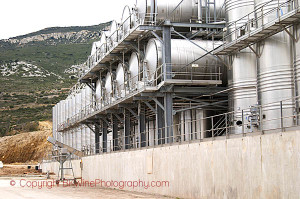 The wine world is not only small picturesque vineyards in a rural setting with a horse pulling a plough between the vines. There are also large groups with international businesses. Euromonitor has listed the top ten wine producers in the world:
The wine world is not only small picturesque vineyards in a rural setting with a horse pulling a plough between the vines. There are also large groups with international businesses. Euromonitor has listed the top ten wine producers in the world:
- E & J Gallo, 2.7% of world production, USA
- Constellation Brands, 1.7%, USA
- The Wine Group, 1.5%, USA
- Treasury Wine Estate, 1.12%, Australia
- Viña Concha y Toro, 1.03%, Chile
- Castel Frères, 1.02%, France
- Accolade Wines, 0.97%, Australia
- Pernod Ricard, 0.97%, France, who, however, virtually does not make any wine in France (except champagne)
- Grupo Peñaflor, 0.9%, Argentina
- FeCoVitA Coop, 0.70%, Argentina, the only co-operative on the list
- Total together: 12.62% of world production.
All of these produce wines under a multitude of brands rather than under their own name. The only names found on a label would be Gallo and Concha y Toro. Read more: vitisphere.com
New Zealand has defined 18 protected wine regions
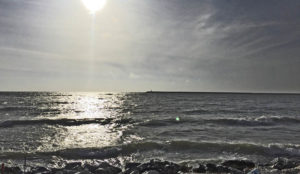 Every wine lover is familiar with different well-established wine regions in New Zealand, but they may not always have been so well-defined and protected from abuse. From July 27 new rules govern 18 “geographical indications”. It is far from the complex systems of rules found in the Old World (Italy, France, Spain and Germany above all) so you should not compare it with AOC / AOP. Hopefully, it will help New Zealand wine producers, especially in less famous regions, to become more well-known. It will certainly also help protect against counterfeiting at home and on the export market. The 18 regions are Auckland, Canterbury, Central Hawke’s Bay, Central Otago, Gisborne, Gladstone, Hawke’s Bay, Kumeu, Marlborough, Martinborough, Matakana, Nelson, North Canterbury, Northland, Waiheke Island, Waipara Valley, Wairarapa and Waitaki Valley North Otago. More regions may come in the future. Read more: nzherald.co.nz
Every wine lover is familiar with different well-established wine regions in New Zealand, but they may not always have been so well-defined and protected from abuse. From July 27 new rules govern 18 “geographical indications”. It is far from the complex systems of rules found in the Old World (Italy, France, Spain and Germany above all) so you should not compare it with AOC / AOP. Hopefully, it will help New Zealand wine producers, especially in less famous regions, to become more well-known. It will certainly also help protect against counterfeiting at home and on the export market. The 18 regions are Auckland, Canterbury, Central Hawke’s Bay, Central Otago, Gisborne, Gladstone, Hawke’s Bay, Kumeu, Marlborough, Martinborough, Matakana, Nelson, North Canterbury, Northland, Waiheke Island, Waipara Valley, Wairarapa and Waitaki Valley North Otago. More regions may come in the future. Read more: nzherald.co.nz
Do you like New Zealand wines? Or are just (at least a little bit) curious? We are planning a wine tour to New Zealand for March 2019. If you are interested in joining us, or just curious, send us an email already now please, so that we can gauge the preliminary interest!
Do we really have global warming? Look at the harvest date!
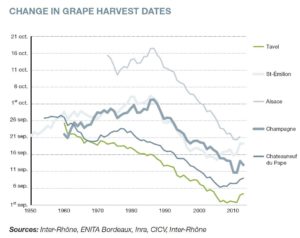 It is much debated (albeit less and less) whether global warming is a real phenomenon or not. I saw an interesting illustration of how the harvest dates have evolved in different wine regions in France since 1950. The figure came from Institute for Climate Economics (I4CE) and is taken from a report entitled Key Figures on Climate, France and Worldwide. The most dramatic example is Alsace: in 1970 (the earliest date noted for Alsace) they harvested starting on October 16 and in 2010 it started on September 21. Between those years it was a steady change to earlier dates. Tavel, St Emilion, Champagne and Chateauneuf-du-Pape are also on the chart. For sure one can question these numbers. Why is not a longer date series given? How do you take into account other factors that affect the harvest date? What about other wine regions? Etcetera. But it is at least an interesting graph!
It is much debated (albeit less and less) whether global warming is a real phenomenon or not. I saw an interesting illustration of how the harvest dates have evolved in different wine regions in France since 1950. The figure came from Institute for Climate Economics (I4CE) and is taken from a report entitled Key Figures on Climate, France and Worldwide. The most dramatic example is Alsace: in 1970 (the earliest date noted for Alsace) they harvested starting on October 16 and in 2010 it started on September 21. Between those years it was a steady change to earlier dates. Tavel, St Emilion, Champagne and Chateauneuf-du-Pape are also on the chart. For sure one can question these numbers. Why is not a longer date series given? How do you take into account other factors that affect the harvest date? What about other wine regions? Etcetera. But it is at least an interesting graph!
Features
Features that we have published during the past month, with lots of reading for you.
High altitude vineyards in Napa
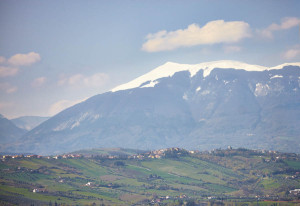 Mountain wineries flourished in the Napa Valley back in the late 19th century but then fell into oblivion. It wasn’t until the mid-1990s that they were rediscovered. “Mountain vineyards, usually some thousand feet or so in elevation, offer a different climatic rhythm and thus produce greater intensity of flavors and aromas. Only with height do you get the combination of clean, thin, cool mountain air which steadies the day’s temperatures, creating warmer days with full sun and cool nights. As elevation increases, sunlight becomes more concentrated, causing grapes to develop deeper pigments. They get more early sun because they are above the fog line, thus forcing grapes to mature and ripen slowly.”
Mountain wineries flourished in the Napa Valley back in the late 19th century but then fell into oblivion. It wasn’t until the mid-1990s that they were rediscovered. “Mountain vineyards, usually some thousand feet or so in elevation, offer a different climatic rhythm and thus produce greater intensity of flavors and aromas. Only with height do you get the combination of clean, thin, cool mountain air which steadies the day’s temperatures, creating warmer days with full sun and cool nights. As elevation increases, sunlight becomes more concentrated, causing grapes to develop deeper pigments. They get more early sun because they are above the fog line, thus forcing grapes to mature and ripen slowly.”
This is an opinion piece by Igor Sill, winemaker in Napa, that you can read on BKWine Magazine: Magic in Napa’s Mountain Region.
A south African pioneer relaunches, Ntsiki Biyela’s Aslina
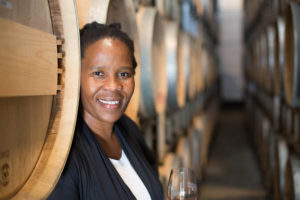 It is not that much of an exaggeration to say that Ntsiki Biyela is a South African winemaking legend. She was the first female black winemaker and has been featured for example on CNN and on Forbes (and on BKWine Magazine previously). After many years as winemaker at Stellekaya in Stellenbosch Ntsiki Biyela has now launched her own winery and range of wines, under the name Aslina. BKWine Magazine’s LM Archer talked to Ntsiki and tells the story.
It is not that much of an exaggeration to say that Ntsiki Biyela is a South African winemaking legend. She was the first female black winemaker and has been featured for example on CNN and on Forbes (and on BKWine Magazine previously). After many years as winemaker at Stellekaya in Stellenbosch Ntsiki Biyela has now launched her own winery and range of wines, under the name Aslina. BKWine Magazine’s LM Archer talked to Ntsiki and tells the story.
Read all of LM Archer’s article on BKWine Magazine: Ntsiki Biyela, the first black female winemaker in South Africa.
And here you have some tasting notes: Tasting Suo Red Collection No 2 and Stellekaya Hercules from South Africa.
Do join us on a trip to South Africa and we will show you some of the best wines and wineries in the country, on the wine tour to South Africa.
Book mentions, including California
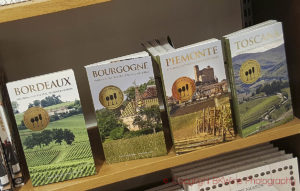 We’ve seen several book reviews on our books, but they have been in Swedish I’m afraid. But there was also a mention, actually a quote from our book Biodynamic, Organic and Natural Winemaking; Sustainable Viticulture and Viniculture on the American site called Civil Eats. Civil Eats recently published an article on organic wine trends in Sonoma and the referred to our book as one of the references: Civil Eats on sustainable and organic wine in Sonoma County, and on our organic wine book. In a way maybe not so strange, since there are very few books that actually explain what organic, biodynamic, sustainable etc is. Most books on the subject tend to be of the type “this is great, you should do it”. What we tried to do is “this is actually what it is, the facts, the rules and how it works; now you decide if you like it or not”. If you want to know what organic, biodynamic, natural, sustainable etc really is, perhaps you should read our book.
We’ve seen several book reviews on our books, but they have been in Swedish I’m afraid. But there was also a mention, actually a quote from our book Biodynamic, Organic and Natural Winemaking; Sustainable Viticulture and Viniculture on the American site called Civil Eats. Civil Eats recently published an article on organic wine trends in Sonoma and the referred to our book as one of the references: Civil Eats on sustainable and organic wine in Sonoma County, and on our organic wine book. In a way maybe not so strange, since there are very few books that actually explain what organic, biodynamic, sustainable etc is. Most books on the subject tend to be of the type “this is great, you should do it”. What we tried to do is “this is actually what it is, the facts, the rules and how it works; now you decide if you like it or not”. If you want to know what organic, biodynamic, natural, sustainable etc really is, perhaps you should read our book.
Glenwood Vineyards is hidden in a Franschhoek side valley; do try and find it!
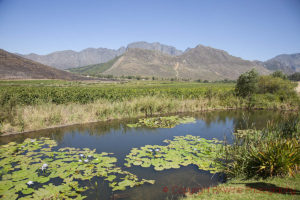 Franschhoek can almost be too quaint, too pretty as a wine region. The wineries are dotted along the main road – the only road – along the valley like pearls on a string. They are surrounded by beautiful real estate developments where the villas have stunning views over the mountains. The village of Franschhoek itself is a paradise for weekending Cape Towners with its charming restaurants, bars, and gift shops. But take one of the roads leading off the valley floor and you quickly reach more wild, almost deserted landscapes. In one of the valleys you find Glenwood vineyards with the winemaker DP Burger.
Franschhoek can almost be too quaint, too pretty as a wine region. The wineries are dotted along the main road – the only road – along the valley like pearls on a string. They are surrounded by beautiful real estate developments where the villas have stunning views over the mountains. The village of Franschhoek itself is a paradise for weekending Cape Towners with its charming restaurants, bars, and gift shops. But take one of the roads leading off the valley floor and you quickly reach more wild, almost deserted landscapes. In one of the valleys you find Glenwood vineyards with the winemaker DP Burger.
We have a whole series of video clips with DP talking about his winery and his wines on BKWine Magazine: DP Burger at Glenwood Vineyards in Franschhoek, South Africa, interview and videos.
Do join us on a trip to South Africa and we will show you some of the best wines and wineries in the country, on the wine tour to South Africa.
Cool climate wines from South Africa? Yes Sir! From Crystallum
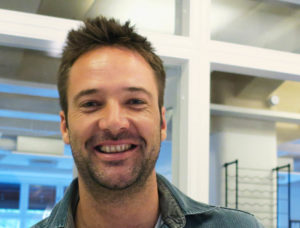 It’s quite possible to make exciting, interesting and characterful wines from Pinot Noir and Chardonnay in South Africa! Everything depends on the temperature – and the winemaker of course (as well as a whole lot else). The proximity to a cold ocean and southern winds means that although southwestern South Africa (Western Cape) can get quite hot there are pockets where southern cold wind cools the ground and allows the cultivation of cold climate grapes such as pinot noir. In the right place, where it is cold enough you can make excellent wines from Pinot Noir and Chardonnay, which the brothers Peter-Allan and Andrew Finlayson have built on when they developed the brand Crystallum.
It’s quite possible to make exciting, interesting and characterful wines from Pinot Noir and Chardonnay in South Africa! Everything depends on the temperature – and the winemaker of course (as well as a whole lot else). The proximity to a cold ocean and southern winds means that although southwestern South Africa (Western Cape) can get quite hot there are pockets where southern cold wind cools the ground and allows the cultivation of cold climate grapes such as pinot noir. In the right place, where it is cold enough you can make excellent wines from Pinot Noir and Chardonnay, which the brothers Peter-Allan and Andrew Finlayson have built on when they developed the brand Crystallum.
Read more on this in Ulf Bengtsson’s article on BKWine Magazine: South Africa’s “hottest” cool region: with Crystallum’s winemaker Peter-Allan Finlayson.
Come with us to South Africa and we will show you some of the best wines and wineries in the country, on the wine tour to South Africa.
Lovely carmenere and cabernet franc from Chile: Viña Maquis
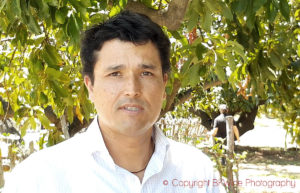 Carmenère and Cabernet Franc are two challenging grapes to grow, says chief wine maker Rodrigo Romero at Viña Maquis. “You have to pay very close attention both in the vineyard and in the cellar.” When the result is good, the wines are stunning. This is exactly what happens at Viña Maquis. Here the conditions seem to be perfect for these two tricky grapes. Viña Maquis is situated in Colchagua, a high quality wine region around 200 kilometres south of Santiago de Chile.
Carmenère and Cabernet Franc are two challenging grapes to grow, says chief wine maker Rodrigo Romero at Viña Maquis. “You have to pay very close attention both in the vineyard and in the cellar.” When the result is good, the wines are stunning. This is exactly what happens at Viña Maquis. Here the conditions seem to be perfect for these two tricky grapes. Viña Maquis is situated in Colchagua, a high quality wine region around 200 kilometres south of Santiago de Chile.
Read more – and watch a video interview – with the chief winemaker in Britt’s article on BKWine Magazine, originally published on Forbes: The greatness of carmenere in Chile at Vina Maquis | Britt on Forbes.
Chile (with e.g. Viña Maquis) and Argentina are two very exciting wine countries that you can explore and discover on the wine tour to Chile-Argentina with BKWine.
18 new wine importers on the Swedish market
In theory there are 1754 wine importers in Sweden. That is the number that has an authorisation from the tax authorities. In reality there are only around 200, which is quite a lot for a small market. We have on BKWine Magazine what is probably the most complete and up to date list of all Swedish wine importers. We recently did a big update of the list adding new ones, 18 of them, and removing some that seem no longer to exist (21). Read more details on BKWine Magazine:
An exclusive medical Corton grand cru
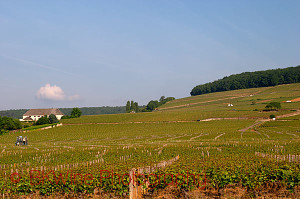 It’s ironic, don’t you think? A doctor whose name is Peste. But he exists, or existed, in Beaune. He bequeathed his vines on the Corton hill to the Hospices de Beaune, a hospital, and they are thus one of the features of the great annual Hospices auction every autumn.
It’s ironic, don’t you think? A doctor whose name is Peste. But he exists, or existed, in Beaune. He bequeathed his vines on the Corton hill to the Hospices de Beaune, a hospital, and they are thus one of the features of the great annual Hospices auction every autumn.
One barrel of Corton Cuvée Docteur Peste 2015 was bought by a Swedish wine importer and has recently been put on the market (~1000 euro for a six-pack). Read Tomas Eriksson’s tasting report on BKWine Magazine: Corton Cuvée Docteur Peste 2015 from Hospices de Beaune, Patriarche Père & Fils.
“An amazing wine tour to Bordeaux”
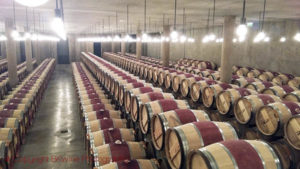 We like collecting comments from people who have travelled with us. It’s not always easy to explain what experiences you will get on one of our wine tours. Then perhaps some feedback from previous customers who have travelled with us can be helpful. A few more:
We like collecting comments from people who have travelled with us. It’s not always easy to explain what experiences you will get on one of our wine tours. Then perhaps some feedback from previous customers who have travelled with us can be helpful. A few more:
- “It is so good that we can hardly imagine travelling in any other way”
- “The wine tour with you was incredibly outstanding.”
- “An exceptionally successful wine tour to Bordeaux”
- “A tour where everything is perfect”
Read more customer comments on our wine tour to Bordeaux.
Wine tours
Some information about current and future wine tours with BKWine.
Chile and Argentina, a wine tour filled with unforgettable experiences
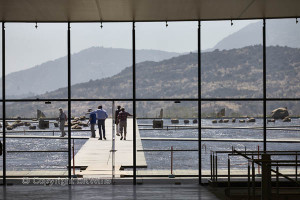 Our wine tour to South America is filled with experiences. The wines, the nature, the people, the food. Every day will be different. Which wine will be your favourite? A Carmenère from Chile or a Malbec from Mendoza? Or maybe a Pinot Noir or a Sauvignon Blanc from Chile’s coastal district where the ocean’s cool winds provide acidity and elegance to the wines. You see more and more different wine styles in Chile and Argentina. In Chile, they grow wine further and further south, in Argentina at higher and higher heights. The ambition is huge in both countries. The quality potential is not yet fully explored. But already, if you know where to go, and we do (!), it is fantastic.
Our wine tour to South America is filled with experiences. The wines, the nature, the people, the food. Every day will be different. Which wine will be your favourite? A Carmenère from Chile or a Malbec from Mendoza? Or maybe a Pinot Noir or a Sauvignon Blanc from Chile’s coastal district where the ocean’s cool winds provide acidity and elegance to the wines. You see more and more different wine styles in Chile and Argentina. In Chile, they grow wine further and further south, in Argentina at higher and higher heights. The ambition is huge in both countries. The quality potential is not yet fully explored. But already, if you know where to go, and we do (!), it is fantastic.
Between our wine visits we enjoy the magnificent nature, we relax at the swimming pool, we drink pisco sour, we taste the world-famous and delicious meat. We will get to know the big cities, Buenos Aires, Valparaiso and Santiago de Chile, and we learn the art of blending different grape varieties into a perfectly balanced wine. We travel by bus across the Andes, a magnificent journey through a desolate, fascinating landscape. In short, a trip you do not easily forget. Book your place now. Only very few left.
Read more on the wine tour to Chile and Argentina 27 January to 11 February 2018.
You can see more of photos and videos from the tour on the Facebook group for the wine tour to Chile and Argentina.
South Africa, wine and food in combination | a world class wine tour
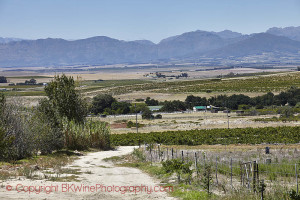 South Africa has about 100,000 hectares (240,000 acres) of vineyards. This figure has been stable for a long time. What has changed is how the grapes are used. During apartheid, over 50% of the grapes went to distillation for brandy production. Now most grapes are used to make wine.
South Africa has about 100,000 hectares (240,000 acres) of vineyards. This figure has been stable for a long time. What has changed is how the grapes are used. During apartheid, over 50% of the grapes went to distillation for brandy production. Now most grapes are used to make wine.
During our tour in the South African wine regions, we will see many examples of this change. More and more producers are making interesting and exciting wines. There is an incredible variety of grape varieties planted in South Africa today. The variety of wine styles is huge. Which is good. And the quality level is astonishing. The South African gastronomy is also very rich in different styles. And delicious. Among other things, we will get to know the traditional and spicy Cape Malay cuisine. With homemade samoosa and bobotie on the plate and a Pinotage in the glass we will not have much to complain about.
Read more on the wine tour to South Africa on 23 February to 5 March 2018.
You can extend your holiday, with our “add-ons”: after the wine tour with safari and before the wine tour with golf.
You can see plenty of pictures and videos from the tour on the Facebook group for the wine tour to South Africa 2017.
Don’t be an egoist! Share with your friends and other wine enthusiasts! Forward the Brief to your friends! Suggest that they sign up for a free subscription !
© Copyright BKWine








